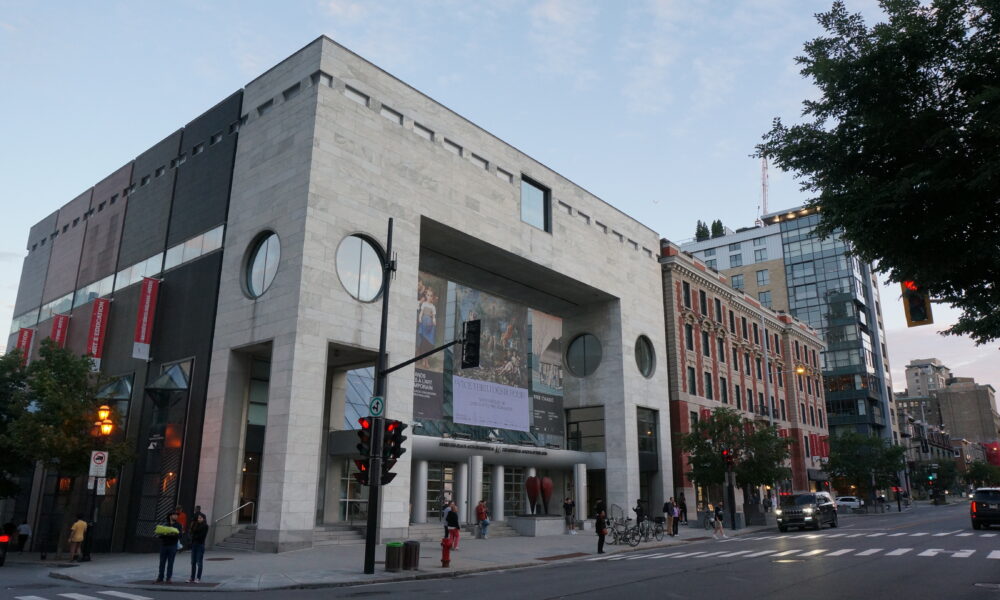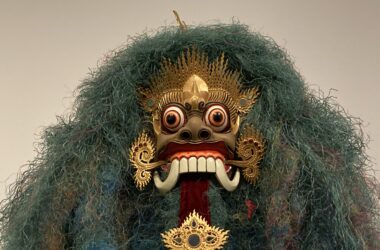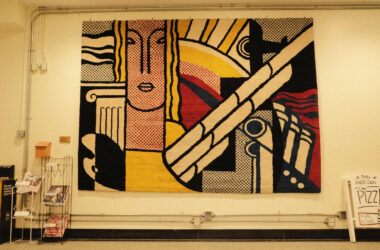Standing in the final room of Saints, Sinners, Lovers, and Fools, I find myself transported into an era abundantly different from my own. My eyes glance over the drapery of richly pigmented paint layers, taking in the synthesis of colour, subject, and function. On the walls hang over 20 paintings, with sculpted borders of golden wood and gilded frames just inches apart. I stand in a recreation of a 16th-century “Cabinet of Curiosities,” a private collection of artifacts used to convey a vast knowledge of the universe. The show recaptures a time when paintings like these were hung in private homes, plainly tacked onto wooden walls, only glanced at casually while walking from room to room. We stand in the art cabinet as if beings from the past, in swooping historical silhouettes, assuming the role of a 16th-century noble to shoulder the fears, desires, and cultural anxieties of this early modern Flemish population.
The exhibition Saints, Sinners, Lovers, and Fools has been on view at the Montreal Museum of Fine Arts since June 8. Organized in collaboration with The Phoebus Foundation, the curators include Chloé M. Pelletier, known for her focus on pre-1800s European art, and Phoebus’s own Katharina Van Cauteren. It is a pictorial navigation through the cultural foundation of the Low Countries and a glimpse into the Flemish psyche, one of anxious consternation of the looming afterlife ahead.
Upon entering the first room, entitled “God is in the Details,” we are greeted with an extension of diverse visual mediums: A wooden statue of a saint, an ornately decorated illuminated manuscript, two triptychs, and several paintings, all of religious sentiment. The divinity of these images is accentuated by the use of gold leaf and rather surrealist imagery. Following the toils of the Black Death, the Low Countries found salvation in contemplating the world that follows life; art became a medium of cultural exploration, both for use in spiritual practices and an examination of anxieties surrounding death.
The room’s highlight comes in the form of a painting, a surrealist representation of a fiery afterlife: 1540’s “Hell,” painted by a follower of Hieronymus Bosch. The imagery is all-consuming, engulfing the viewer in its rabid eccentricities to convey the overarching presence of religious fear in the Southern Netherlands. In one corner, a beaked creature devours a human; in another, dogs gnaw hungrily at the stomach of a knight while a flying fish impales five souls right beside. These depictions of anguish and suffering exhibit themselves in this surreal landscape as a manifestation of the nation’s restless uncertainty about what accompanies death. Its inclusion is a masterclass in curation, elevating a placated religious apprehension that, after its viewing, accompanies all other artworks in the room.
The symbiotic flow of galleries continues as subject matter ebbs and flows, highlighting noble portrait art, the sins of societal “fools,” scientific discoveries, and the ever-changing progression of the Flemish spirit in times of war and struggle. Notable works of Anthony van Dyck and Peter Paul Rubens adorn the walls alongside works from the MMFA’s own art collection.
The Montreal leg of this exhibition contains several pieces owned by the museum, including Lucas van Valckenborch’s astounding 1595 scene, A Meat and Fish Market (Winter). While it typically hangs in the Pavilion for Peace’s third floor, the work is brought to life amongst these complementary Flemish works. These selected paintings are exceptional additions to the show, contextualizing many pieces seen regularly by the Montreal community in a culturally congruent space.
The selected works of Saints, Sinners, Lovers, and Fools solidify curation as an art form in itself. Every room, every wall, and every painting holds resonance in defining a Flemish identity. Immersing oneself in this culture and exploring the emotions of the period allows for seeing a rendered beauty in its fear and trepidation. It redefines art as cultural remedy and illuminates emotions long forgotten.
Saints, Sinners, Lovers, and Fools runs until October 20, 2024. Tickets are available online or in person at the MMFA.







